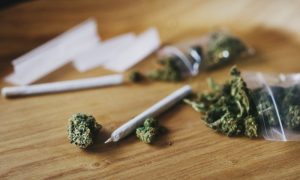How do you get rid of medication that is no longer needed or wanted? To keep it out of the wrong hands, do you flush it, throw it away, or wash it down the drain? Unfortunately, depending on the chemical makeup of a medicine, improper disposal can lead to contamination of water systems. Marine ecosystems, human health, and other things are all at risk as a result of this pollution. Here’s a quick review of the dangers of improper medication disposal, as well as some tips on how to do it right.
These disposal techniques had previously been recommended to avoid unintended use by minors or to aid in the prevention of opioid-seeking individuals using them. Water treatment plants and septic systems, on the other hand, were not designed with the goal of eliminating pharmaceutical chemicals from the water. Pharmaceutical-related substances have been found in streams across the US, as well as in our drinking water.
Pharmaceuticals can be discovered in 40% of the country’s drinking water, which is filtered through deep underground aquifers. These compounds have been connected to steroids, antibiotics, antidepressants, painkillers, and other drugs. Because landfill chemicals seep into surface water, throwing pharmaceuticals in the trash can be hazardous. What kind of environmental harm could these pollutants cause? According to studies, prescription pharmaceutical leftovers have caused alterations in behavior, reproduction, and growth in several species, including frogs and fish. Swallowing polluted fish causes harm to both humans and animals.
Furthermore, these compounds, as well as the components generated by their breakdown, wind up in lakes and rivers after being handled in wastewater treatment plants. After being introduced into these biomes, they begin to modify the nutrient content and microbes. The repercussions of a microbiological level of contamination in an environment can be far-reaching. Following that, the same water is used to irrigate the animal farms and agricultural lands on which we rely.
Individuals can contribute to avert greater damage whereas major contributors to the problem, such as livestock farms, hospitals, and nursing homes, can’t. First and foremost, read the entire package of information that comes with the medicine. On a brochure or booklet, the EPA waste code should be listed, as well as whether the medication is flammable, corrosive, poisonous, or reactive. The flush list from the FDA is also available online. All of this information can be used to determine if a medicine is safe to flush or toss away.
If you’re not sure if a drug falls into one of these categories, bring it to a drug take-back facility or your local controlled substance public disposal location. It’s also a good idea to use greater caution while making purchases. Medication should not be kept on hand because it may expire and go to waste.
For further information on proper medicine disposal, please see the link below.






More Stories
Effective Ways to Manage Spinal Curvature in Adolescents
Enhance Your Culinary Experience: Pairing Cannabis Strains with Local Flavors
How to Choose the Right Cheek Filler and Factors to Consider?